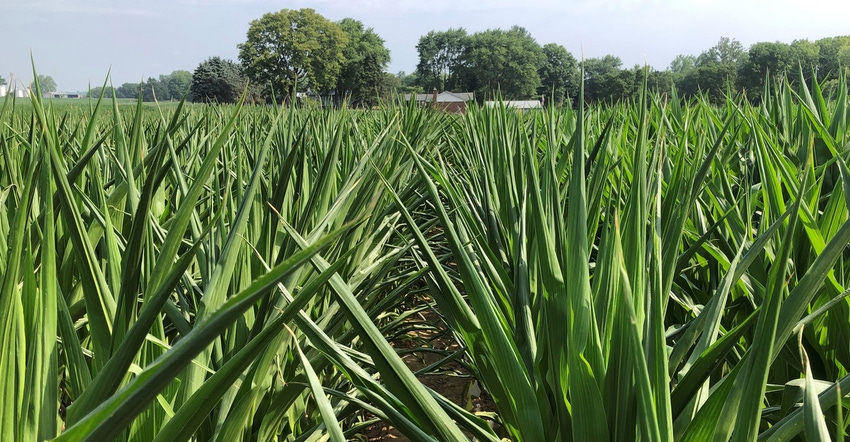July 18, 2022

Taking lower crop prices doesn’t sting as much if it’s because yields are good overall, and your yields are good too. What hurts the worst is when yields are good in most places, but not where you farm. Prices sag and you don’t have as much grain to sell as most people. It’s a double-whammy, snake-eyes outcome no one likes.
Unfortunately, this year is shaping up like one that could deliver snake eyes to some through lower yields. At midseason, yield potential was building across most of the major corn- and soybean-growing regions in the U.S. Yet in localized areas, Mother Nature was less kind. Abnormally dry to droughty conditions plagued part of Indiana and surrounding states.
At the same time, one farmer who talked to Dave Nanda, an Indiana Prairie Farmer contributor, said he received almost too much rain in early July. As midseason approached, he believed one more good rain at the right time would make his corn crop. On the same day, Nanda talked to a farmer in central Indiana who had received less than an inch from early June through mid-July. Corn was hanging in, but barely.
Fresh perspective
The late Jim Newman, a Purdue University agronomist and climatologist, put things in perspective for me in 1983, another season featuring a drought scare. In fact, that scare became reality. Yields were down nationally, but also on my father’s farm.
“You can’t just look at the back 40 on your farm and make decisions about grain marketing today,” Newman said in 1983. “It’s a global market, and you must follow weather patterns not only across the Corn Belt but across the world to get a handle on what markets might do.”
If it was true in 1983, it’s certainly true today. “If your corn is doing well, you tend to think a good crop is on the way,” Newman said. “On the other hand, if it’s dry at your farm, the tendency is to think it is dry everywhere. It just doesn’t work that way.”
Crop reports and weather
Another lesson Newman taught me concerned USDA crop reports. After tracking reports from 1960 through 1980, he discovered that in years with summers on the cool, wet side, USDA monthly corn estimates tended to go up from August through the final estimate. In years with hot, dry summers, USDA’s estimated yield tended to shrink with each crop report after August.
He explained that people tended to underestimate corn yields early in a year with good growing conditions and overestimate it early in years that didn’t turn out as favorable for corn.
The problem with years like 2022 is that it’s favorable some places and not favorable elsewhere across the country. In fact, it’s favorable some places and not others within Indiana, and maybe even within your own county. That makes it harder to predict which way USDA crop estimates will go later in the year.
There’s still time for Mother Nature to salvage this season, even on your farm. Here’s hoping no one in Indiana rolls snake eyes for crop yields and prices in 2022.
Comments? Email [email protected].
You May Also Like




